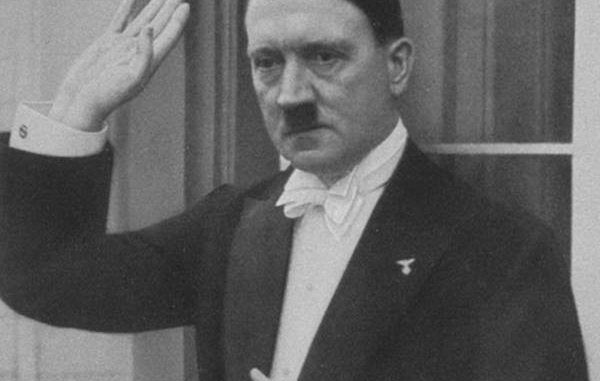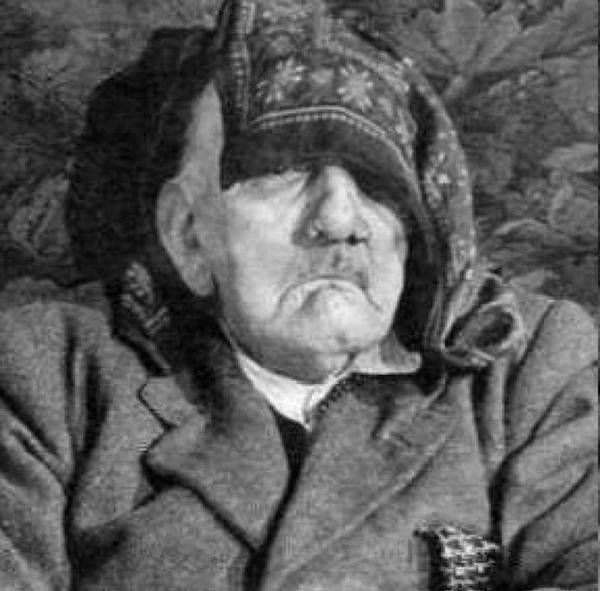
From Henry Makow (source): When Hitler returned to Munich from one of his frequent visits to Berlin, he compared himself to Jesus throwing the money changers out of the temple.
“The traffic on the Kurfurstendamn, the luxury, the perversion and the Jewish materialism disgusted me so thoroughly that I was almost beside myself,” he told his friends Putzi Hanfstaengl and Detrich Eckart. “I nearly imagined myself to be Jesus Christ when he came to the temple and found it taken in by the money changers. I can easily imagine how he felt when he seized the whip and scourged them out.” (Stan Lauryssens, The Man Who Invented the Third Reich, p. 108)
While many today are willing to take Hitler at his own estimation, Hitler was a deft liar and hypocrite who indulged in the materialism he pretended to despise. When he returned from Berlin, or any trip abroad, his suitcases were stuffed with Swiss francs and US dollars, precious metals and jewelry– gifts from his many wealthy supporters, mainly entrepreneurs and aristocrats. (It is rumored that even Stalin funded him.)

BYPASS THE CENSORS
Sign up to get unfiltered news delivered straight to your inbox.
You can unsubscribe any time. By subscribing you agree to our Terms of Use
In the early 1920’s, these gifts in foreign currency were worth many times more due to the exorbitant inflation. Hitler used this money to support his personal retinue and the Nazi Party, which he treated as a personal business enterprise.
But according to Wulf Schwartzwaller, (The Unknown Hitler: His Private Life and Fortune, 1989) he did not deny himself. He became a billionaire from a massive personal slush fund, ownership of the Nazi publishing monopoly, and from royalties from Mein Kampf.
FRIEND OF THE SUPER RICH
After Hitler purged the socialist elements from the Nazi Party in 1934, and smashed labor unions, the Reich Association of German Industrialists set up the “Adolf Hitler Endowment” to which every employer contributed quarterly. The tax deductible contribution went directly to Hitler and he did not have to account for it.
“Based on reliable estimates, this bogus endowment received 100 million marks annually, all of which was available to the Fuhrer “privately and personally.” (194) This is equivalent to $40 million a year in 1935, or roughly $640 million today.
Hitler knew that “as long as German industry was making money, [thanks to rearmament] his private money sources would be inexhaustible…broken down to each individual industrialist…it was a modest contribution, one he was entitled to as the savior of German industry from Bolshevism…” (197)
Whenever Hitler wanted money for anything, Bormann paid, regardless of whether it was a house for a meritorious party member or a gift for Eva Braun, commissions for artists and sculptors or renovations for theaters.
“Controlling the purse strings enabled Hitler to determine the living standards of his paladins and to reward them with money and gifts, like an absolute monarch, or punish them by withholding funds. Having inexhaustible funds provided an almost erotic stimulation for Hitler.” (197)
According to estimates, more than a billion marks passed through the private donation account managed by Bormann. “By present day standards, and given the purchasing power of the era, Hitler was a billionaire several times over.” (196)
(Picture purports to show Hitler on his death bed, at age 75)
Nevertheless, Hitler didn’t leave any stone unturned. For example, many Germans left their estates to the Nazi Party in their wills. In 1935, Bormann instructed all provincial party treasurers to route inheritances directly to Hitler. (p. 196)
Hitler spend 30 million marks ($480 million today) on his retreat on the Obersaltzberg. He also amassed
close to 10,000 paintings and art objects valued at one billion marks, at least. In addition, he collected Gobelin tapestries, antique arms and furniture. He intended to endow a future cultural complex in his home town of Linz but in the meantime, these objects were all kept hidden in storage. (217)
OTHER REVENUE STREAMS
Another source of wealth was Hitler’s ownership of the Eher Publishing House which by 1944 controlled 90 percent of the German press and book market. By war’s end, the Eher Syndicate had assets worth 600 million marks, roughly $8.5 billion today. The monopoly did not pay a cent of taxes after 1940 as it came under Hitler’s personal exemption. (p.105)
In addition, Hitler’s Mein Kampf sold a million copies every year after 1934. His annual royalties were between 1.5 and two million marks (between $6 and $8 million today.) In 1944, there were 5.5 million marks in his royalty account, about $22 million today. (p.168)
Hitler may have been very generous to the people and causes he admired but he also looked after number one. He was certainly no Jesus Christ expelling the money changers from the temple! – See more at: http://henrymakow.com/2014/12/hitler-was-a-billionaire.html#sthash.N5OoGvgD.dpuf
Latest posts by Royce Christyn (see all)
- Irish Slaves – What The History Books Will Never Tell You - November 1, 2017
- Government Op Who Predicted Super Bowl Score Warns Of Nuclear War - February 18, 2017
- Video: Why Voting Doesn’t Change Anything & Democracy Is A Lie - May 7, 2016




Be the first to comment